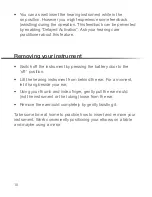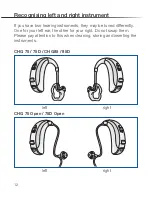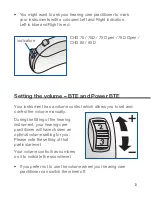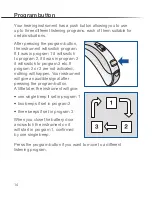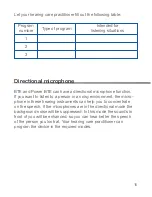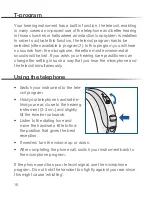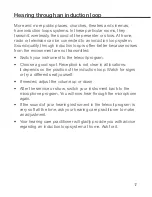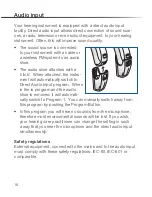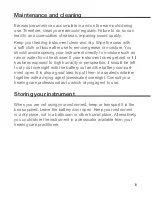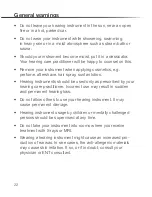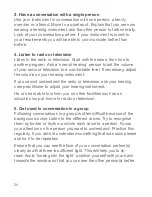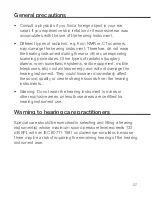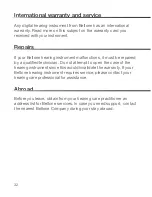
24
3. Have a conversation with a single person
Use your instrument in conversation with one person; a family
member or a friend. Move to a quiet spot. Explain that you are now
wearing a hearing instrument; ask the other person to talk normally.
Look at your conversation partner. If your instrument is tuned to
your requirements you will be able to communicate better than
before.
4. Listen to radio or television
Listen to the radio or television. Start with the news, then turn to
another program. Ask a ‘normal hearing’ person to set the volume
of your radio or television to a comfortable level. If necessary, adjust
the volume on your hearing instrument.
If you cannot understand the radio or television, ask your hearing
care practitioner to adjust your hearing instrument.
He or she is able to inform you on other facilities such as an
induction loop at home for radio or television.
5. Get used to conversation in a group
Following conversations in a group is often difficult because of the
background noise. Listen to the different voices. Try to recognise
them by timbre or rhythm and link each voice to a person. Focus
your attention on the person you want to understand. Practice this
regularly. If you did not understand something that was said, please
ask for it to be repeated.
Ensure that you can see the face of your conversation partner(s)
clearly and that there is sufficient light. This will help you to lip-
read. Avoid ‘looking into the light,’ position yourself with your back
towards the window so that you can see the other person(s) better.

